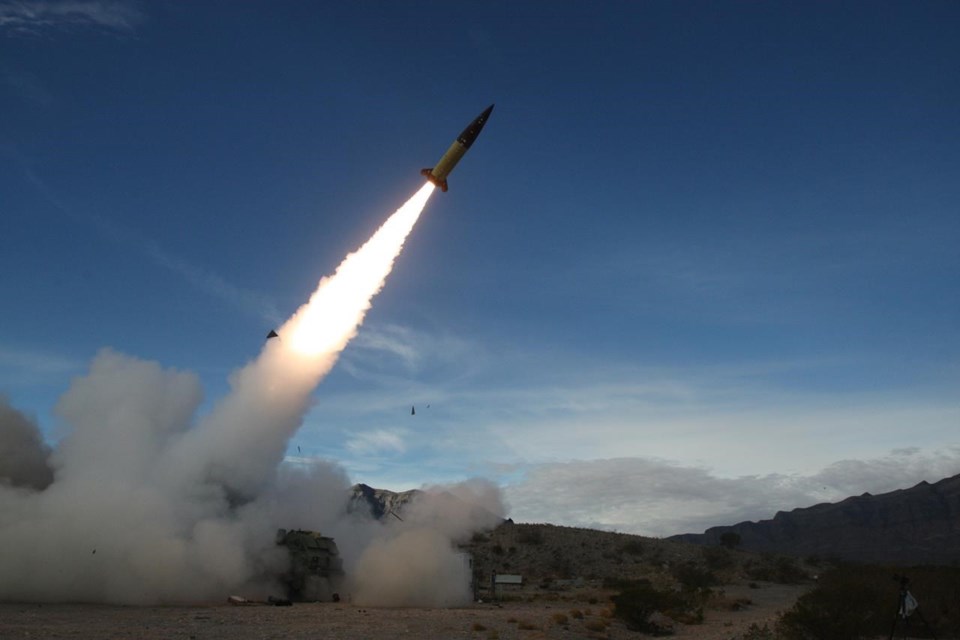WASHINGTON (AP) — Ukrainian leaders are pressing the U.S. and Western allies for air defense systems and longer-range weapons to keep up the momentum in their counteroffensive against Russia and fight back against Moscow's intensified attacks.
Defense Secretary Lloyd Austin on Wednesday said allies are committed to sending weapons “as fast as we can physically get them there.” And he said defense leaders meeting in Brussels are working to send a wide array of systems, ranging from tanks and armored vehicles to air defense and artillery.
But there are still a number of high-profile, advanced weapons that Ukraine wants and the U.S. won't provide, due to political sensitivities, classified technology or limited stockpiles.
A look at some of the weapons Ukraine will or won't get:
WHAT WEAPONS UKRAINE IS GETTING
In a meeting with about 50 defense leaders this week, Austin and Army Gen. Mark Milley, chairman of the Joint Chiefs of Staff, discussed plans to send more air defense weapons to Ukraine and also increase training for Ukrainian troops.
“We know that Ukraine still needs even more long-range fires, and air defense systems and artillery systems along with other crucial capabilities,” Austin said Wednesday. He said allies talked about a number of air defense systems.
The U.S. has already provided 20 of the , or HIMARS, and has promised 18 more.
And the Pentagon has said it will deliver the surface-to-air missile systems to Ukraine in the coming weeks, providing Kyiv with a weapon that it has pressed for since earlier this year. The systems will provide medium- to long-range defenses against Russian missile attacks.
Germany is now delivering its first IRIS-T surface-to-air missile system, which has a range of about 25 miles (40 kilometers). It has promised a total of four.
Overall, the U.S. has sent Ukraine $16.8 billion in weapons and other aid since the war began on Feb. 24. That aid has included hundreds of armored vehicles, 142 155mm Howitzers and 880,000 rounds of ammunition for them, plus thousands of Javelin anti-tank and Stinger anti-aircraft weapons and 60 million rounds of bullets.
WHAT WEAPONS THE US HASN'T SENT
Ukrainian President Volodymyr Zelenskyy has repeatedly made it clear that his country needs more advanced weapons to continue the fight. Russia launched a barrage of attacks using drones, heavy artillery and missiles this week.
Russian President Vladimir Putin ordered the attacks in response to an explosion last weekend on a crucial bridge linking Russia to Crimea. The Russians are also struggling to beat back a fierce counteroffensive by Ukrainian forces, who have just retaken five towns and villages in the southern Kherson region. It was illegally annexed by Russia along with the neighboring Zaporizhzhia region, and Donetsk and Luhansk in the east.
Zelenskyy's pleas for some weapons, however, are so far going unanswered.
A key request is for the Army Tactical Missile System. Known as ATACMS, it is one of the weapons that Zelenskyy has repeatedly requested. It would give Ukraine the ability to strike Russian targets from as far as about 180 miles (300 kilometers).
The system uses the same launchers as the HIMARS rockets that Kyiv has successfully used in its counteroffensive, but has as much as three times the range of those rockets.
A major U.S. concern is that the longer-range capability could be used against targets inside Russia and further provoke Putin, said Brad Bowman, the senior director of the Center on Military and Political Power at the Foundation for the Defense of Democracies, a Washington-based nonpartisan research institute.
Similarly, the U.S. isn't likely to send Ukraine the highly sophisticated surface-to-air Patriot missile system, which has the ability to shoot down incoming ballistic missiles.
J.D. Williams, a senior defense researcher at the Rand Corp., said the Patriots are connected to some of the United States’ most sensitive command-and-control networks and could require U.S. troops on the ground to operate them. The Biden administration has ruled out using U.S. combat forces inside Ukraine.
The U.S. has only a limited number of those systems.
Zelenskyy has also pressed the U.S. since March to provide fighter jets such as F-16s, but the U.S. has repeatedly rejected the idea to avoid further escalation with Russia.
The U.S. also has so far declined to send Ukraine more sophisticated longer-range drones, such as the Gray Eagle, which also would give Ukraine a longer-distance strike capability. There also are concerns about Russia gaining access to such advanced technology if one were to be shot down.
Tara Copp And Lolita C. Baldor, The Associated Press




